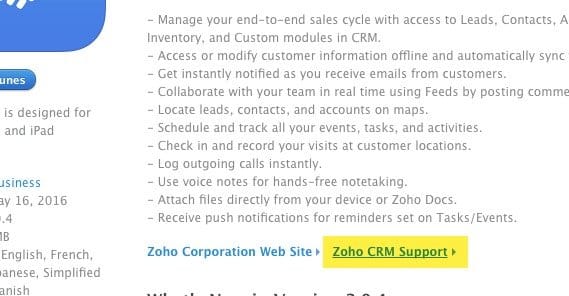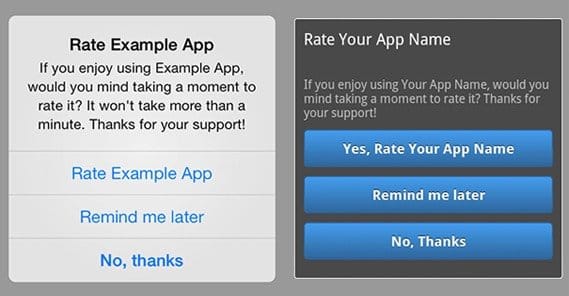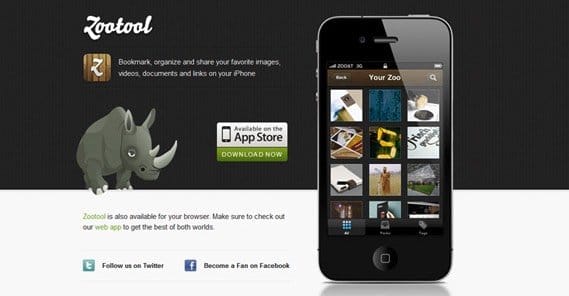12 Ways to Get More Downloads and Installs on Your App

Apps are a lot of work. You have to find a problem that an app can solve. You have to make sure there aren’t any other apps out there doing the same thing, or you have to make sure your prospective app can do something they cannot. You have to develop that app and make sure it works on all prospective platforms, and I’m not just talking about mobile here. Desktop apps count too, web apps and downloaded programs alike. On top of all of that, you have to figure out how to get people aware of, interested in, and downloading your app.
Well, I can’t help you with most of that today. What I can do is give you tips on getting your app downloaded more frequently. Most of these tips will work for both mobile and desktop apps, but a few will only apply to mobile apps. All will be helpful if you put them to use.
1. Make a Demonstration Video
An app demonstration video should be attractive, compelling, and interesting. You’re showing off the core problem the app solves and how it solves it. You’re not going into technical details; this is not a usage guide, it is a commercial. Think of it like the trailer for a movie. You know how many movies have all their best scenes in the trailer? That’s what you’re shooting for.
If need be, hire a professional company to make the video for you. It doesn’t have to be very long, so it might not need to be very expensive. The key is good graphical design and good audio. I know I’ve turned away from a couple apps in the past because their video seemed very amateur. It was actually a detriment to them to upload a terrible video, because no video at all would have been more attractive to me.
If your narrator sounds like one bored man reading a script for $5, you’re not doing your app justice. At the very least you need a high quality voice actor as a narrator. Good writing goes a long way, but the visuals will be just as important.
2. Make Screenshots Visible and Attractive
Your app needs screenshots. I recommend a half and half split of actual app screenshots and photos of people using your app, in typical usage conditions. Those need the app to be clearly visible and not obviously photoshopped in place, so they don’t look like edited stock photos.
App screenshots need to showcase the most interesting parts of the app. They don’t have to be the most detailed or the most useful parts of the app, just visually appealing shots to showcase how easy to use the app is. If your app looks like it was programmed with Visual Basic in 2003 as part of a high school project, well, you’re going to have to do some very creative spinning to get people to care about it. Today’s emphasis on visual design is so important that looks alone can kill an otherwise excellent app. This applies to both mobile and desktop apps, as well. People are a little more tolerant of something on a PC, but not by much.
3. Readily and Obviously Provide Documentation and Support
If your app is anything more complex than 2048, you need to be available to provide support.
However, you need to do more than just provide support; you need to be visible in doing it.
- If someone asks you for support on Twitter, reply publicly.
- Use a chat script so you have ready access to support on the web.
- Address negative reviews or critical reviews publicly and fix the problems.
- Have links plainly visible to easy documentation and in depth development documents so people of all knowledge levels can find support on their own should they wish to go looking.
This is actually more crucial for desktop apps than for mobile apps. If a mobile app doesn’t work, people expect it to be a device compatibility issue, and there’s less of a troubleshooting culture. People don’t expect their problem can be solved as easily. That said, if there are potential device compatibility issues, have an entire support form dedicated to helping identify and troubleshoot them.
4. Encourage Reviews
When you’re looking at a product and deciding if you want it, what’s the first thing you do? If you’re anything like most people, you check the reviews. Customer reviews can make or break just about any product. A series of bad reviews will compound; no one will want to risk getting a bad product to leave a good review. Even if you have a ton of satisfied customers, if they aren’t leaving reviews, they aren’t doing you much good.
The best way to get positive reviews is to solicit them, which is unfortunate. Unsatisfied people will leave reviews to warn others or to try to attract support. Satisfied users forget and don’t leave anything. You need to prod them, either with an in-app prompt or a contact through another source, to get them to leave a positive review.
You can also try to incentivize leaving positive reviews. Sometimes you can offer in-app bonuses for a review. This can get you a lot of early positive reviews, which can help drown out a few negatives and make the overall average high. Careful with this, as some app marketplaces do not allow this (like Amazon).
5. Get Featured
There are two primary ways you can get featured. One is through app review sites and industry sites that might want to review or feature a tool or app such as yours. By submitting yourself to these sites, you can eventually get a feature. If you talk to them before you submit, you can try to time a feature with the release of your app, for added bonus.
The other way to get featured is on the app stores themselves. If you’re selling your app through Google Play, iTunes, the Amazon App Store, or any other app market, you can get featured on their category pages. This is, of course, a complex process, so you need to put some serious effort into it.
6. Embark on a Content Marketing Campaign
Reviews require users, and users require awareness. The number one way to get awareness these days is through content marketing. You need a website with a blog – if you’re not making an app based around your existing business, of course – and you need to populate it with relevant content.
By relevant content here, I mean a lot of information about the sorts of problems your app can solve and how they can be solved with your app. You want just about everything to end with a way the user can use your app to fix a problem or perform some action to streamline their own lives.
You can also reach out to related industry blogs and ask to write guest posts for their sites. This can get you more visibility from locations that otherwise might not take note of you right away, and they might even feature you on their own later.
7. Reach Out to Get Unbiased Coverage
Many tech bloggers and app reviewers like to pride themselves on their unbiased reviews. They want people to trust their opinions, so they allow anyone to submit apps or programs to review, but they promise that they won’t be accepting money to review them and they won’t be giving them preferential treatment.
The idea is to stand by a high quality product and offer it up for unbiased review. You’re confident that it will be used properly and reviewed positively based on its value, not on bribes. This also gives you an opportunity; if the reviewer finds something negative, rather than allow them to blog about it, fix it! Then they can write that you have active and valuable support as well as a high quality product.
8. Create a Detailed Landing Page
Whether you’re promoting a mobile app or a desktop app, you want a landing page. A landing page will be a hyper-focused product pitch, with all the information and previews a user could want. You want screenshots, you want videos, you want demonstrations, feature lists, unique selling points, and all the rest.
Now, optimizing a landing page is tricky work. Do you include minimal information and let the product sell itself? Do you go into great detail and risk over-explaining? Do you put the CTA at the top, the bottom, or in a sliding trough? There are a ton of possible optimizations you can make, and you’ll need to test them all.
The number one thing I can tell you is that for an app you need to have a landing page that looks good and functions on mobile devices. It stands to reason, but you’d be surprised how many people leave it out.
9. Use App Analytics and Feedback to Improve
Unlike websites, where it’s quick and easy to add in Google Analytics, apps need to be built with analytics included. This means they need additional permissions and it means some users are going to be picky about when and how often they call home. You need to pick through the dozens of analytics suites and find one that has a decent reputation, isn’t too intrusive, and gets you the data you need.
In addition to gaining usage data from analytics, you also need to use data from your support staff, community forums, and reviews to find things to improve with your app. When you find a problem that’s affecting multiple users, you can try to patch it quickly. Smaller usability errors and annoyances can wait, but not too long; nothing is worse than reporting a bug and coming back six months later to find it’s still there.
Constant improvement is the key to app success over time. Otherwise, you might get a few dedicated users in the initial surge, but there’s nothing to prevent someone else from coming in and doing what you do better than you.
10. Create a Trial Version for Skeptical Users
If possible, you may want to create a trial for your app to allow people to “try before they buy” so to speak. For desktop apps that have subscription services, this is almost always available; a time-limited free trial with a feature-limited version of the platform is commonplace, and it’s usually cheap and easy to upgrade to the lowest tier of paid service to remove the restrictions.
This is a little more difficult for mobile apps. You can go about it in one of two ways. One way is to create a limited demo version of the app and release it as a secondary free product. This doesn’t get you much in the way of additional reviews and value, though, since it’s split off on another listing. The other way is to include in-app purchases to unlock additional features, which has the one problem of having in-app purchasing, which a lot of people aren’t fond of. Either way, pick a method and go for it.
11. Offer Time Limited Discounts
One common trick for app producers is to offer time-sensitive discounts when you launch. If your app is normally $10, a $5 version for the first month after release can go a long way towards sparking early adoption. On the other hand, it doesn’t leave you much room for profit if you go half-off on a $1 app. It all depends on the type of app, the cost of the app, and whether or not you have a subscription service to go along with it. There are a lot of ways to accomplish the same goal, you just need to figure out what works best with your monetization model.
12. Pay for Visibility
Apps are hard to market on an ongoing basis because they tend to be one-time purchases. Even if a user stops using it for a while, they aren’t cancelling an account – unless you’re using an account system of course – they’re just uninstalling it. They can always reinstall it later.
The general paid marketing strategy is a blitz when the app launches. Use cost per install adds and drop a sizable budget on them, to get as many people to install as possible during the initial push. From there, you just need to maintain interest and use content outreach to draw in more people over time.
 ContentPowered.com
ContentPowered.com











